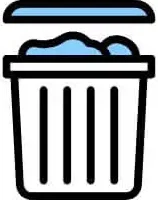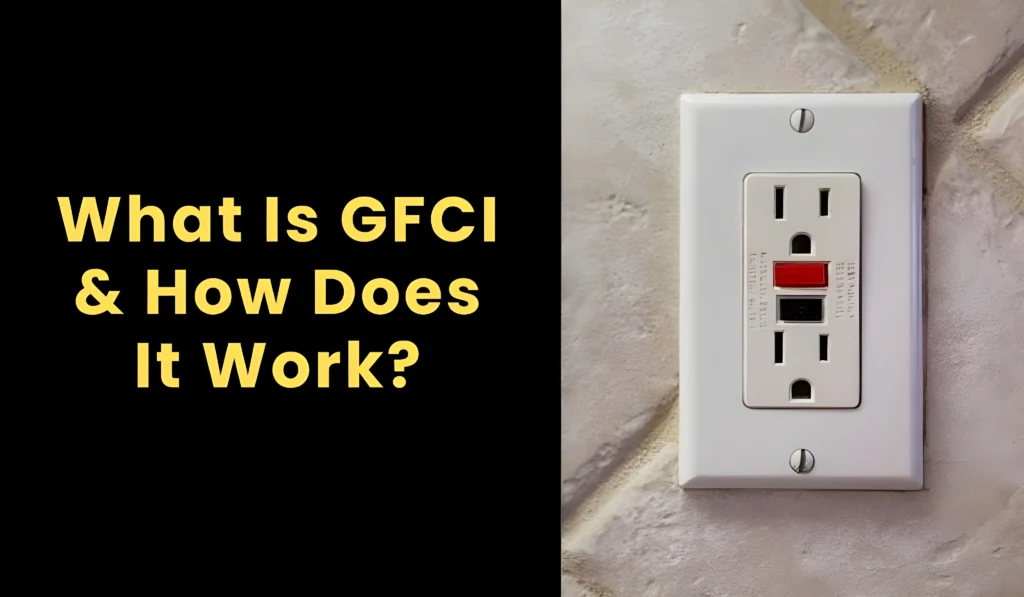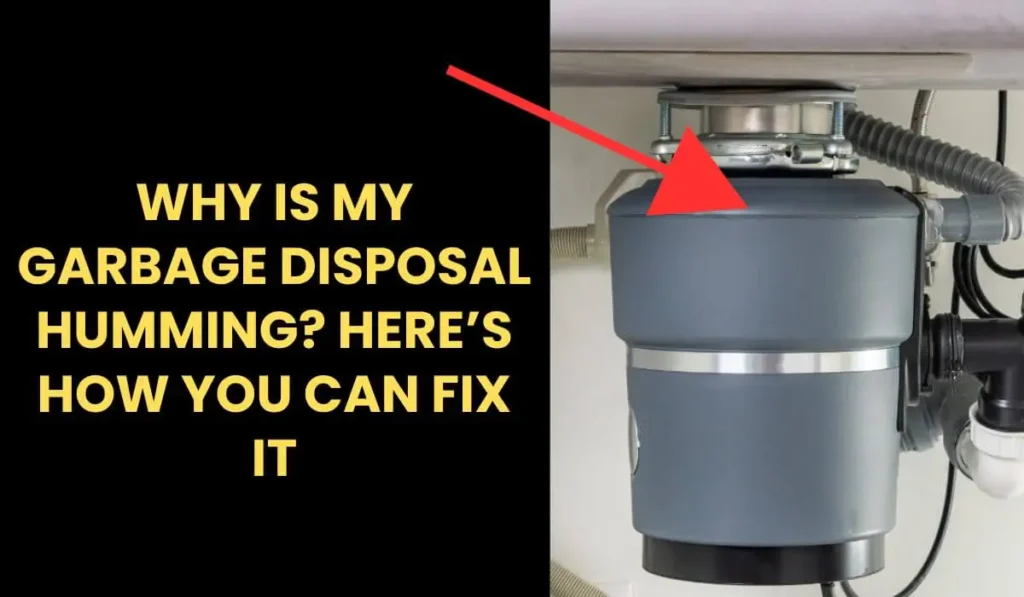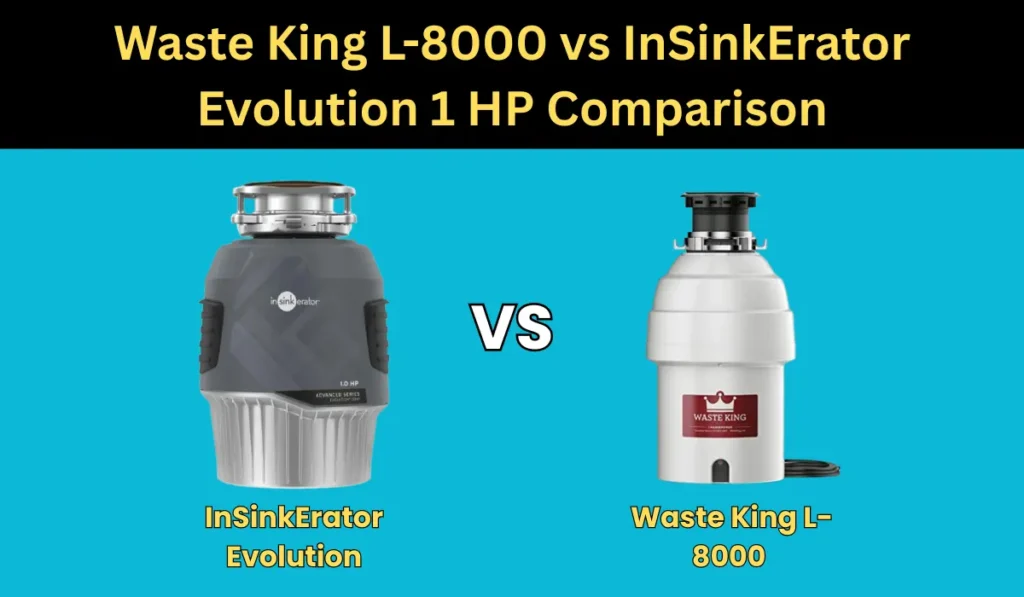Why Your Garbage Disposal Is Leaking from the Power Cord and How to Fix It?
A leak from the bottom is one of the most frequent issues with garbage disposals. Because the disposal is usually hidden away under your sink, you might not even be aware of the leak immediately. But once you find it, it’s vital to change it out promptly to prevent further issues.
Some people will even notice water dripping from the power cord, and this may come from a broken seal or a crack in the disposal’s shell. But it isn’t exactly easy to repair, and replacing the entire unit is really the best approach.
Let’s explore the most typical reasons your garbage disposal’s leaking near power cord and then provide you with a clear, step-by-step guide to fix the problem safely as well as effectively.
Understanding the Garbage Disposal Power Cord Leak

The power cord is typically attached at the bottom or side of the unit, connecting the disposal to your home’s electrical supply. Because the disposal handles water and food waste, it relies on internal seals and gaskets to keep water contained inside. When these seals fail or the disposal’s casing is damaged, water can escape and leak near the power cord connection point.
This is particularly concerning because water near electrical wiring can cause short circuits, damage the disposal’s motor, or even lead to electrical shocks. Understanding this connection between the internal seals, the disposal’s body, and the power cord area is key to diagnosing and fixing the leak.
Common Causes of Garbage Disposal Leaks Near the Power Cord
1. Worn or Damaged Internal Seals
One of the most common causes of a leak around the power cord are failed internal seals. These seals are installed to stop water from leaking out of the disposal’s inner workings. Unfortunately, repeated exposure to strong cleaning agents, as well as food remnants and wet conditions, will eventually cause the rubber or plastic seals to crack, shrink, or become brittle. When this is compromised, water can then work its way in and leak out near the power cord.
2. Cracked Disposal Body
Another common cause is a crack or fracture in the disposal’s body. Most garbage disposals have a metal or rugged plastic body to endure regular use. But cracks can still form from accidental blows, food waste eating away at it’s acidic nature, or defects during it’s manufacturing. Even a small crack near the bottom of the disposal can allow water to escape and puddle up around the power cord, becoming a safety risk.
3. Loose or Damaged Power Cord Connection
Well sometimes it’s not the seals or the body but the power cord. Loose power cord, or water is damaging the wiring inside the disposal which can create a small gap, and water gets through. Furthermore, a slack connection might contribute to possibility of electrical shorts and shocks, so check the cord and the attachment of it closely.
4. Other Related Causes
Leaks from around the power cord can also sometimes be deceptive. For instance, a bolt that’s become loose or a sink flange (the part that connects the disposal to the sink drain) that’s been damaged can let water escape from the sink area and make it look like water is coming from the power cord. It’s wise to check all related parts to guarantee that the right source of the leak is pinpointed.
How to Diagnose the Leak Location
- Safety is your number one concern as you begin any repair work. Garbage disposals mix water and electricity, which can be a dangerous blend if you don’t treat it kindly. First find your home’s circuit breaker panel and turn off the breaker running the garbage disposal. This will disable power to the unit and help avoid electric shock.
- Now, dry the outside of the disposal with a towel and let water run through the sink and disposal, watching closely where the bottom an the power cord of the disposal meet. Check for any indications of moisture, dripping or standing water. If you don’t find anything obvious, you may want to pull the disposal out from the mounting flange so that you can examine its seals and the body of the disposal more closely.
Step-by-Step Guide to Fix a Garbage Disposal Leak from the Power Cord
Step 1: Disconnect Power and Remove Disposal
Again the first task is to turn off the power, and once you are sure, move forward with a wrench or screwdriver and loosen the mounting bolts or ring that holds the disposal to the sink flange. Slowly let the disposal unit down and set it on a stable work surface. This will allow you complete access to the bottom of the disposal and the power cord connection.
Step 2: Inspect and Replace Internal Seals
With the disposal removed, examine the rubber or plastic seals around the power cord entry point. If they are cracked, brittle, or worn, carefully remove them. Clean flange area of any old plumber’s putty and debris. Add a new layer of plumber’s putty, or install new seals that are made for your make and model of garbage disposal. This will produce a snug, water-sealed seal to avert additional leaks.
Step 3: Check and Replace Power Cord if Necessary
Check the power cord for damaged wires, insulation breaks or connections that are not secure. If the cord is frayed, it’s better to replace the whole thing. To do this, turn over the disposal, open the wiring compartment and remove the old cord, then install a replacement cord, according to the manufacturer’s instructions. Confirm that everything is tight so no water can drip inside.
Step 4: Reassemble and Reinstall Disposal
Reinstall the disposal onto the mounting flange under the sink after you replace seals and the power cord, if necessary. Tighten the mounting bolts as securely as possible, but do not overtighten, or you will crack the disposal housing or damage the sink flange. Hello and welcome! Just be sure that the assembly is properly aligned and in the right position to prevent vibration or leakage during the operation.
Step 5: Test for Leaks
Flip the circuit breaker back on and plug the disposal in if necessary. Turn on the disposal and run cold water through the sink. Pay close attention to the work area under the power cord and to the bottom of the unit for any leaks. If no water is leaking, congratulations — you fixed the leak!
Further Reading:
Kitchen Sink Only Drains When Garbage Disposal Is On
How to Fix Loose Garbage Disposal Blades
Why Your Garbage Disposal Allen Wrench Won’t Turn
Conclusion
A leaking garbage disposal near the power cord is a problem that requires prompt attention to avoid water damage and electrical hazards. By understanding the common causes, following the safety precautions, and using the step-by-step repair guide provided, you can confidently address this issue yourself. However, if at any point you feel unsure or uncomfortable working with electrical components, it’s wise to call a professional plumber or electrician. Maintaining a leak-free disposal not only protects your kitchen but also extends the life of your appliance, saving you money and hassle in the long run.
The Author

I’m Muhammad Nabeel Dar, an employee in waste management and the owner of Garbage Waste Disposal with more than four years of experience helping people to control waste and garbage disposals are the best tools to control it. Read more







